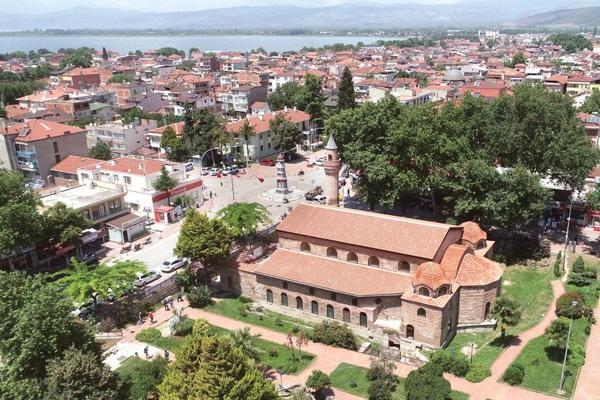Hagia Sophia, ‘a mosque of conquest’ in İznik
BURSA


The İznik Hagia Sophia Mosque (Orhan Mosque), a church that was converted into a mosque after Orhan Gazi conquered İznik in 1331, is wooing visitors with its historical importance and spiritual atmosphere.
The Hagia Sophia served as a temple in the Roman era and a basilica was built over the structure at the time of the Eastern Roman Empire (Byzantine) in the 7th century.
The structure, which is believed to have collapsed in an earthquake in the 11th century, was rebuilt with notable changes in its architecture structure, naves and columns.
The structure was turned into a mosque in 1331 after the conquest of İznik and is today registered in the name of the Orhan Gazi Foundation.
After a fire in the 16th century, the İznik Hagia Sophia Mosque was restored and its architecture was changed with the order of Ottoman Sultan Süleyman the Magnificent.
The historical building was restored again 2007 by the Bursa Foundations Directorate. It was closed with a roof and its ruined minaret was renovated, before being reopened on Nov. 6, 2011.
Historical sources say the structure served as a church nearly for 850 years, and perhaps most importantly was the site of the Seventh Ecumenical Council, attended by 350 patriarchs and a number of monks under the leadership of Patriarch Trasios in 787.
Frescos (wall paintings) had been banned in churches until that time, but they were given permission during the Seventh Ecumenical Council and icons were once again allowed.
It is believed that the first frescoes were in this building, depicting the Virgin Mary, Jesus Christ and John the Baptist in the southern wall of the mosque.
A unique structure in the world
İznik Hagia Sophia Mosque Imam Mahmut Şahin said the structure had served as a mosque between 1331 and 1920, and tourists from across the world visit the mosque today.
“Visitors thank us after seeing this place, because it is a unique and matchless structure in the world. Foreign tourists record the sound of the ezan [call to prayer]. When my friend was performing the ezan some time ago, Chinese tourists recorded it and said they would share it in their country … During the month of Ramadan we have even more visitors,” Şahin added.
